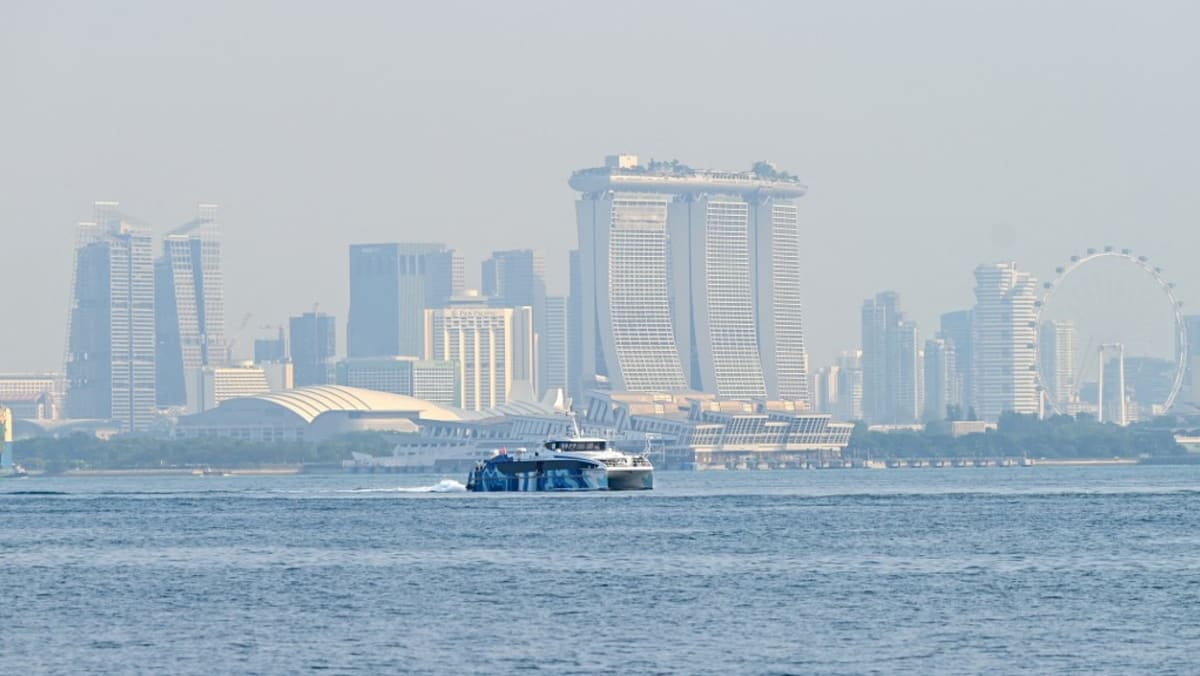SINGAPORE: He was sailing through a channel between Sentosa and Lazarus islands south of Singapore, when his vessel met with strong winds and currents.
The captain soon noticed something was amiss with his ship’s position relative to a fixed navigation buoy, a sign that it was on the dangerous side of the channel.
The 35m-long vessel was in fact being pushed by the elements towards a hidden shoal off Lazarus, a popular destination for nature lovers and beach goers.
A quick intervention by the captain to divert the vessel sharply to the right helped avert disaster – barely.
“It was so close to hitting a shoal that couldn’t be seen due to high tide,” the now-retired captain Iskandar Ismail told CNA.
He added that his ship’s alarms sounded metres away from the shallow waters, and that grounding and subsequent environmental pollution were real risks.
The close shave has served as a reminder to Mr Iskandar, who for five years sailed on bunker tankers among other vessels, of the challenges navigating Singapore’s coastal waters.
In June, a container barge ran aground off Tanjong Beach in Sentosa. There were no reports of damage, injuries or pollution, and the barge was later towed away for inspection and investigation.
Two years ago, a superyacht also ran aground near the Buran Channel near Sentosa.
“Ships losing control is not a new phenomenon, but thankfully still relatively rare,” said Mr Toby Stephens, head of shipping in Asia for global maritime law firm HFW.
It is nevertheless a concern in a busy port like Singapore, especially in the vicinity of areas like Jurong Island and liquified natural gas (LNG) terminals, he added.
Mr Stephens cited the example of the Vox Maxima incident in 2024 – Singapore’s worst oil spill in a decade.
The Netherlands-flagged dredger lost steering control before colliding with the Singapore-flagged Marine Honour at Pasir Panjang Terminal in June last year, causing about 400 tonnes of oil to spill into the sea.
The oil washed up along Singapore’s southern shorelines, including beaches at Sentosa, East Coast Park and Labrador Nature Reserve. Clean-up operations took over two months.
Abroad, there have also been periodic cases of large vessels colliding into coastal infrastructure when passing through waterways.
Singapore-flagged container vessel Dali smashed into a Baltimore bridge in March last year, after losing power and despite desperate attempts to stop in time by dropping anchor.
In May, a Mexican Navy training ship Cuauhtemoc also lost power and slammed into the Brooklyn Bridge in New York.
ROGUE WAVES, ROGUE SHIPS
Challenges unique to manoeuvring through Singapore’s waters include strong tidal currents when entering narrow straits and channels, and heavy maritime traffic, industry players told CNA.
Singapore’s coastal infrastructure – from civilian structures like Marina Barrage and Bedok Jetty, to industrial facilities like those on Jurong Island – now faces greater risks with rising sea levels, changing climate and complicated tropical coastal geography, said coastal science professor Adam Switzer from the Nanyang Technological University’s Asian School of the Environment.
“Ocean currents, including in Singapore, are commonly fast, shifting and hard to predict. Extreme waves from storm activity, potential tsunamis and other rogue waves can hit with little warning. Runaway vessels may lose control in strong currents,” said the expert in coastal hazards.
The move to new fuels as a result of industry efforts to decarbonise may also increase short-term risks, as ships adjust to new technology and systems, noted Mr Stephens.
